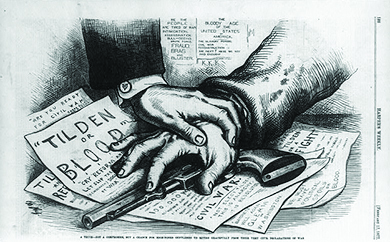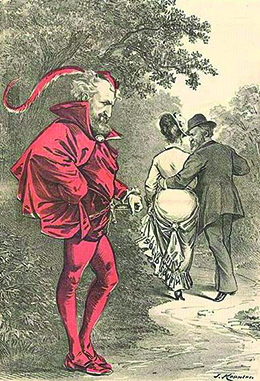| << Chapter < Page | Chapter >> Page > |
Fearing a significant African American and white Republican voter turnout in the South, particularly in the wake of the Civil Rights Act of 1875, which further empowered African Americans with protection in terms of public accommodations, Democrats relied upon white supremacist terror organizations to intimidate blacks and Republicans, including physically assaulting many while they attempted to vote. The Redshirts, based in Mississippi and the Carolinas, and the White League in Louisiana, relied upon intimidation tactics similar to the Ku Klux Klan but operated in a more open and organized fashion with the sole goal of restoring Democrats to political predominance in the South. In several instances, Redshirts would attack freedmen who attempted to vote, whipping them openly in the streets while simultaneously hosting barbecues to attract Democratic voters to the polls. Women throughout South Carolina began to sew red flannel shirts for the men to wear as a sign of their political views; women themselves began wearing red ribbons in their hair and bows about their waists.
The result of the presidential election, ultimately, was close. Tilden won the popular vote by nearly 300,000 votes; however, he had only 184 electoral votes, with 185 needed to proclaim formal victory. Three states, Florida, Louisiana, and South Carolina, were in dispute due to widespread charges of voter fraud and miscounting. Questions regarding the validity of one of the three electors in Oregon cast further doubt on the final vote; however, that state subsequently presented evidence to Congress confirming all three electoral votes for Hayes.
As a result of the disputed election, the House of Representatives established a special electoral commission to determine which candidate won the challenged electoral votes of these three states. In what later became known as the Compromise of 1877, Republican Party leaders offered southern Democrats an enticing deal. The offer was that if the commission found in favor of a Hayes victory, Hayes would order the withdrawal of the remaining U.S. troops from those three southern states, thus allowing the collapse of the radical Reconstruction governments of the immediate post-Civil War era. This move would permit southern Democrats to end federal intervention and control their own states’ fates in the wake of the end of slavery ( [link] ).

After weeks of deliberation, the electoral commission voted eight to seven along straight party lines, declaring Hayes the victor in each of the three disputed states. As a result, Hayes defeated Tilden in the electoral vote by a count of 185–184 and became the next president. By April of that year, radical Reconstruction ended as promised, with the removal of federal troops from the final two Reconstruction states, South Carolina and Louisiana. Within a year, Redeemers—largely Southern Democrats—had regained control of the political and social fabric of the South.
Although unpopular among the voting electorate, especially among African Americans who referred to it as “The Great Betrayal,” the compromise exposed the willingness of the two major political parties to avoid a “stand-off” via a southern Democrat filibuster, which would have greatly prolonged the final decision regarding the election. Democrats were largely satisfied to end Reconstruction and maintain “home rule” in the South in exchange for control over the White House. Likewise, most realized that Hayes would likely be a one-term president at best and prove to be as ineffectual as his pre-Civil War predecessors.
Perhaps most surprising was the lack of even greater public outrage over such a transparent compromise, indicative of the little that Americans expected of their national government. In an era where voter turnout remained relatively high, the two major political parties remained largely indistinguishable in their agendas as well as their propensity for questionable tactics and backroom deals. Likewise, a growing belief in laissez-faire principles as opposed to reforms and government intervention (which many Americans believed contributed to the outbreak of the Civil War) led even more Americans to accept the nature of an inactive federal government ( [link] ).

In the years following the Civil War, American politics were disjointed, corrupt, and, at the federal level, largely ineffective in terms of addressing the challenges that Americans faced. Local and regional politics, and the bosses who ran the political machines, dominated through systematic graft and bribery. Americans around the country recognized that solutions to the mounting problems they faced would not come from Washington, DC, but from their local political leaders. Thus, the cycle of federal ineffectiveness and machine politics continued through the remainder of the century relatively unabated.
Meanwhile, in the Compromise of 1877, an electoral commission declared Rutherford B. Hayes the winner of the contested presidential election in exchange for the withdrawal of federal troops from South Carolina, Louisiana, and Florida. As a result, Southern Democrats were able to reestablish control over their home governments, which would have a tremendous impact on the direction of southern politics and society in the decades to come.

Notification Switch
Would you like to follow the 'U.s. history' conversation and receive update notifications?